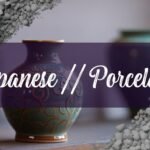Blue and white pottery, with its timeless elegance and striking contrast, has captivated artisans and collectors for centuries. But what exactly do we call this iconic style? The answer is wonderfully diverse, reflecting the rich tapestry of cultures that have embraced and evolved this art form. From the delicate “qinghua” of China to the charming “Delftware” of the Netherlands, each name carries a story of origin, influence, and unique artistic expression.
In China, the birthplace of blue and white porcelain, it is known as “qinghua” (青花瓷), meaning “blue flowers.” This style flourished during the Yuan, Ming, and Qing dynasties, with the cobalt blue pigment initially sourced from Persia. Islamic potters in Iraq, inspired by these Chinese imports, developed their own blue and white ware in the 9th century, using cobalt blue glazes on tin-glazed earthenware. Across the sea, Japanese artisans refer to their blue and white porcelain as “sometsuke” (染付), which emerged in the 17th century and often featured local motifs. Korean blue and white porcelain, known as “baekja” (백자), was prominent during the Joseon dynasty, showcasing expansive paintings of dragons and floral designs. Vietnam also has its own tradition, with blue and white pottery produced in the Chu Đậu village during the 15th century.
Venturing into Europe, we encounter “Delftware” or “Delft Blue” from the Netherlands, a tin-glazed earthenware that gained immense popularity in the 17th century, drawing inspiration from Chinese porcelain. England followed suit with “English Delftware,” echoing both Dutch Delftware and Chinese porcelain in its designs. In Russia, the blue and white ceramic tradition is celebrated as “Gzhel” (Гжель), originating in a village of the same name in 1802, featuring distinctive blue designs on a white background. Even India boasts “Jaipur Blue Pottery,” influenced by Persian designs and unique for its quartz-based glaze. The story continues across Persia, Italy (“maiolica”), Spain (“Talavera”), Mexico (“Talavera Poblana”), Turkey (“Iznik pottery”), France (“Nevers Faience”), Portugal (“Azulejos”), Germany (also “Delftware”), and even America (“American Delftware”). Each region imbued the style with its own cultural nuances and artistic flair.
The different variations and unique styles of pottery that developed are truly a testement to the way people and ideas can spread, mingle, and transform in interesting and unexpected ways!
While the allure of blue and white pottery is undeniable, it’s essential to ensure that the glazes used are food-safe, especially for functional pieces. This means they should be free from harmful chemicals like lead and cadmium, which can leach into food and beverages. Look for glazes explicitly labeled as “food safe” and avoid those with suspicious ingredients or surface characteristics. Firing temperatures also play a crucial role, as underfired glazes are more prone to leaching. Simple tests, like the lemon test, can help determine a glaze’s suitability for food use. With a little care and knowledge, you can create or collect beautiful blue and white pottery that is both visually stunning and safe to use.
For those who sculpt their own pottery, selecting the right clay is paramount, especially when aiming for detailed designs. Porcelain, with its fine texture and high plasticity, is a favorite for intricate work, firing at high temperatures to a smooth, translucent finish. Stoneware is another excellent choice, offering durability and versatility for both functional and decorative pieces, with good plasticity for holding its shape during sculpting. When choosing a clay, consider its plasticity, firing temperature, texture, and grog content to ensure it aligns with your project’s needs and your skill level. Finally, understanding decorative techniques like sgraffito, where a surface layer is scratched to reveal a contrasting layer beneath, can add another layer of depth and artistry to your blue and white creations. This technique, with its ancient roots and global presence, offers endless possibilities for creative expression in the world of pottery.





